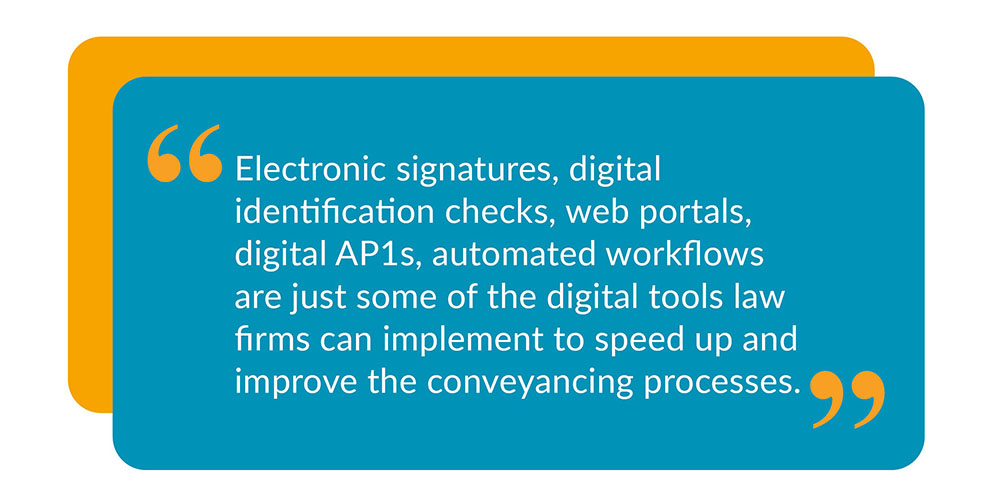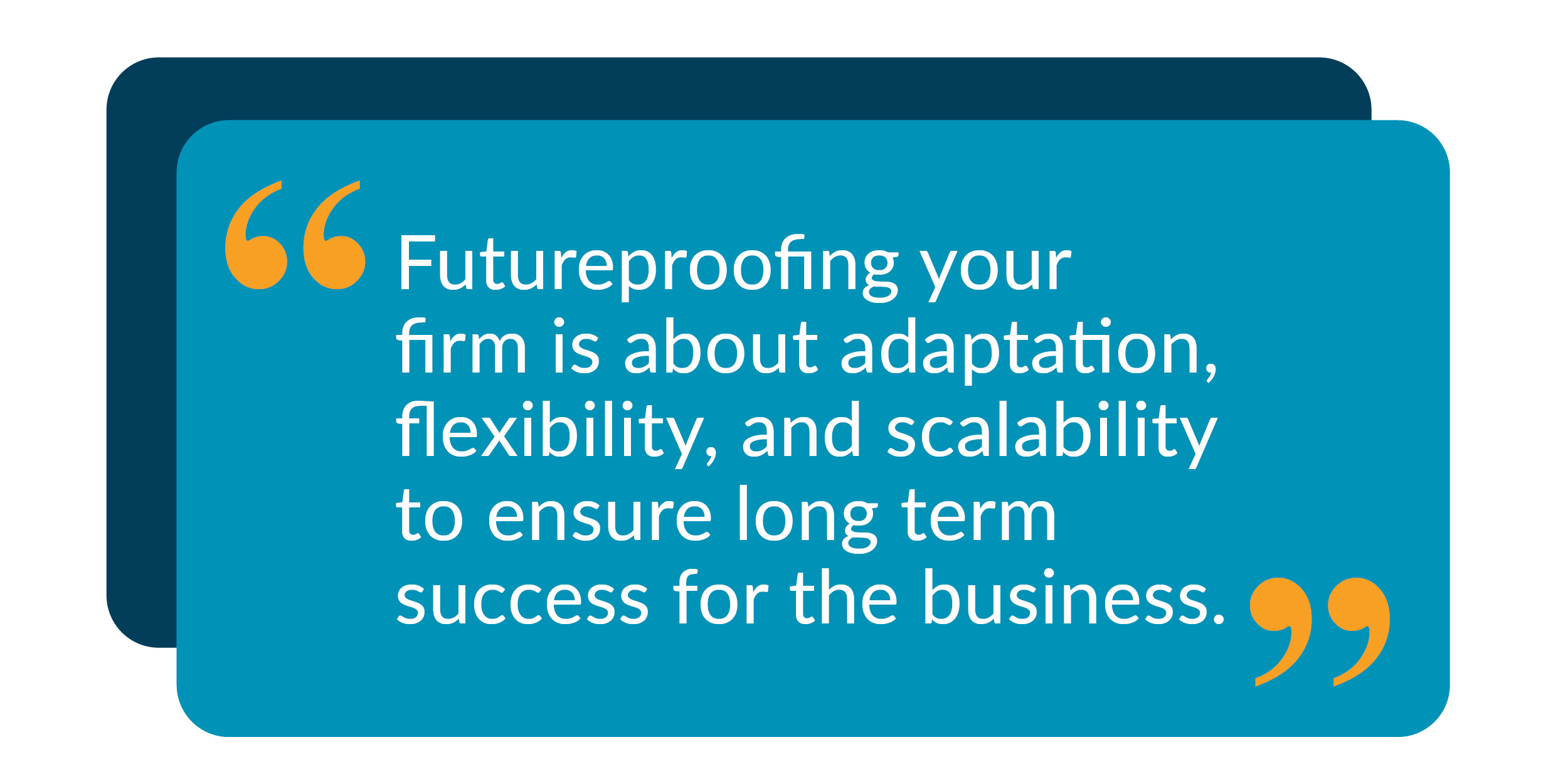We explore all things technology in the conveyancing space, why innovation must be at the core of the sector, and how law firms can futureproof their business with Osprey Approach CEO, Chris Pucci.
Guest blog: Interview with Osprey Approach CEO, Chris Pucci
We recently caught up with Osprey Approach’s recently appointed CEO, Chris Pucci, to discuss technology in the conveyancing space, why innovation must be at the core of the sector, and how law firms can futureproof their business.

Joining Osprey Approach in January 2020 as Sales Director, Chris, like the rest of us, didn’t know what was lying in wait just a few months into the year and his new role at the case management provider. However, supporting law firms in navigating the challenges introduced by the pandemic, the team at Osprey were able to keep businesses operating as usual due to their cloud-based solution.
With the exposure to working in close connection with their clients, Chris was able to immerse himself right among the legal tech space, earning him a promotion to CEO in December 2021 – a role he’s been excited to fill. Most of all, he’s looking forward to working alongside the talented team at Osprey on some exciting new tech projects.
Who are your clients and what does Osprey offer your audience?
Osprey is a case management system that supports law firms of all sizes, shapes, and specialisms, with the most common areas of law covering conveyancing, family law, probate and wills, immigration, and litigation. We offer an all-in-one accounting, practice, and case management software solution that helps firms streamline their entire operation.
What are the most important considerations for law firms when choosing a CMS?
Before law firms even begin reviewing what options are available to them, they need to review their current challenges, future goals, and software expectations – it’s crucial to complete this process to get the most value from your software investment. When you’re in this stage of the process, be sure to involve the entire team so you understand the needs from across various departments and roles within the business.
Next, ask yourself whether the software or solution you’re considering meets your business needs. It’s more than simply features and functionality. What integration options are available? What about data security, or training and support options? The relationship you have your software supplier and the levels of support and guidance you receive will be crucial to the success and utilisation of the investment.
How can law firms futureproof their operation and what’s the importance of innovation with this?
Futureproofing your firm is about adaptation, flexibility, and scalability to ensure long term success for the business. Solid and reliable foundations, such as a practice and case management system (PCMS), are a fundamental building block. To ensure a futureproofed PCMS, firms need to invest in a system that has powerful integrations, is fully connected, is cloud-based to enable business continuity, and is actively developing and offers extensive training.
Innovation is usually associated with implementing the next new advancement in technology but continuous review and improvements on existing processes is the type of innovation that will have the biggest impact on future success and a law firms’ bottom-line. To get the most from your internal resource, and of course your software investments, it’s crucial to continually look for small improvements across the firm to maximise return and effectiveness. It’s the small changes, improvements, and automations that make the biggest impact on driving efficiencies, increasing profitability, and improving team and client satisfaction.
How can law firms use technology to their advantage in the conveyancing process?
The pressures conveyancers face are constantly rising with growing workloads, changes in client expectations, and shrinking profit margins. Streamlining processes to improve efficiencies is crucial to freeing conveyancers up from the repetitive administration so they can save time, focus on the client experience, stay compliant and increase profitability.
Conveyancers should lean on technology to do the heavy lifting and automate the repetitive tasks where possible, prompt fee earners of compliance requirements and best practices, and streamline client communication. This will not only have a positive impact on their workload pressures, but also on the firm’s profitability and their client’s satisfaction.
Electronic signatures, digital identification checks, web portals, digital AP1s, automated workflows are just some of the digital tools law firms can implement to speed up and improve the conveyancing processes.

What are the benefits of offering a cloud-based solution over an on-premise solution?
A cloud-based software solution provides more flexibility, which lends itself to the busy, and sometimes unpredictable nature of a law firms schedule. With a cloud-based solution you’re more easily able to view and work from your system on any device, in any location without the security risks or accessibility challenges. This means lawyers have their client and case data and documents on hand no matter if they’re in the office, in court, or at home.
A cloud-based solution also removes the maintenance resource and costs needed because the software is managed by the supplier. All functionality developments, security updates and new features are managed by the supplier and are included within your licence fee. This means IT managers no longer need to worry about system updates, server upgrades or lengthy instalment processes because it’s already taken care of.
What do you believe makes a truly great integration?
I believe three things make a truly great integration: the integration must flow two ways so data can be admitted from one system, processed in another, and have the outcome sent back, the integration is continually reviewed and adapted to ensure it’s always improving so it’s futureproofed, and the integration partners work closely together so problems are communicated, and responsibility is shared.

Building on that, what would you say to the firms using InfoTrack and Osprey who aren’t yet integrated?
I would have to ask the question, why? The brilliant features of both solutions are only enhanced when integrated. You can access all the same services and tools, right from within your case management solution which brings further efficiencies and reduction in risk to your firm, helping to speed up your conveyancing processes further. If you’re looking to futureproof your firm and improve the effectiveness of your conveyancing department then the easiest thing you can do today is integrate InfoTrack and Osprey. Remove unnecessary admin, save time, and reduce risk through integration.
What sort of feedback do you receive from firms who are integrated with both Osprey and InfoTrack?
That they don’t know why they didn’t do it sooner. Both platforms are a great way to streamline, digitise, and modernise processes and when integrated together you get further enhancements in efficiencies as well as reduction in risk, a single source of truth and a connected operation.
Where do you see Osprey Approach in the next five years? What developments do you have in the pipeline?
We have some exciting new features in the pipeline that look to enhance law firm’s client interactions, which we know is a top priority for practices in 2022 and crucial to help firms stay competitive.
Looking towards the next five years feels an impossible task after the last few years of global challenges and uncertainty, but at Osprey Approach we’re always continuing to innovate to provide a reliable and robust solution that ensures law firms can easily run a successful and compliant firm.

What does the future hold for the sector around technology?
When commenting on the effects of the pandemic, it was noted many times that the legal sector had advanced 10 years in 12 months, and it’s completely true, but there is much more innovating and adapting to be done. Like many other sectors too, businesses will lean on technology further to not only improve the performance and profitability of their firms but to simply make their life easier and more enjoyable. Work-life balance became a top priority as we moved into a post-pandemic world as many individuals benefitted from working from home, reducing their commute, and increasing the flexibility of their hours. Technology will help to ease the burden of the mundane and repetitive tasks so individuals can work smarter and prioritise the work life balance.
And of course, technology provides the platform for true innovation and change when it comes to delivering legal services to clients and I can only hope that the future of the legal sector is simpler and easier for all involved.
Want to know more about how your firm could maximise its conveyancing processes through integration? Get in touch with us today by booking a demo.




